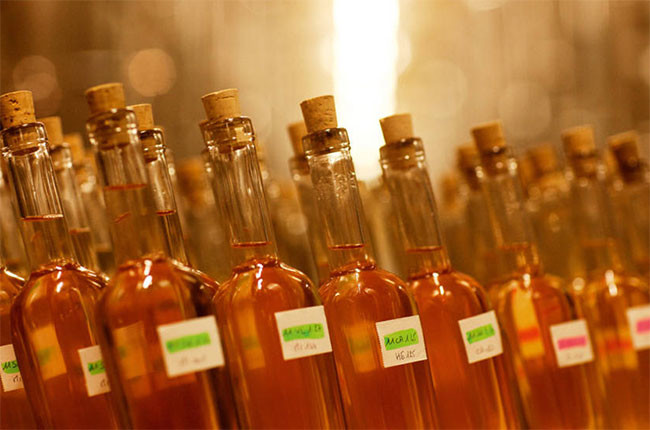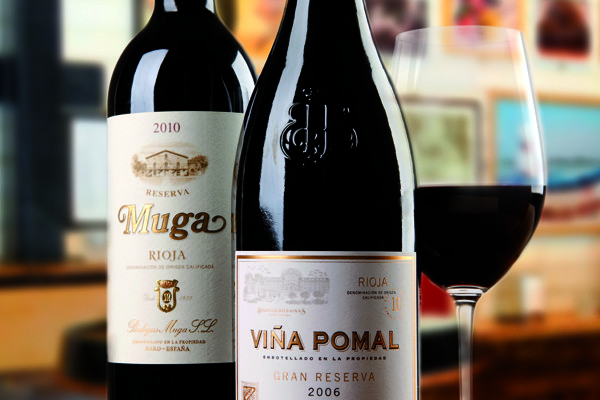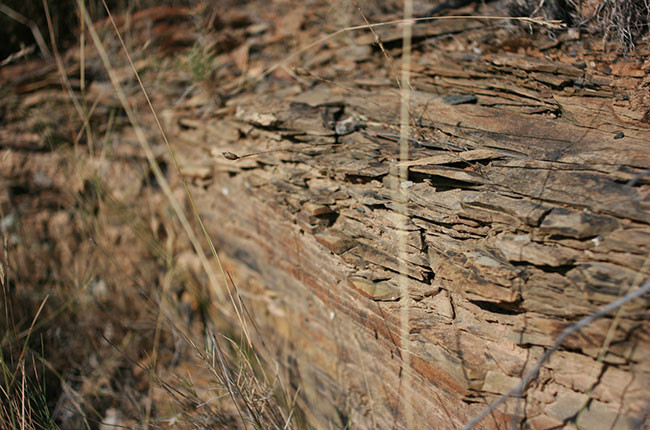Drink again. As Stephen Brook found on a recent trip to Friuli, there is a nucleus of winemakers crafting Pinot Grigios on the slopes of Friuli with more poise and persistence than its bland alter-ego ever had.

Last summer, at a wine event in Barolo, I was asked to comment on a range of top Pinot Grigio wines from Friuli. I threw caution to the winds and remarked that I felt the best wines, while exotic and complex, were flirting with overripeness and thus heaviness. I was unaware that many of the producers were in the room, taking note of what the panel was saying. Instead of a stiletto through the shoulder blades, I received an invitation to return to explore Friuli’s wineries and wines. So off I went.
The American wine blogger Ron Washam memorably noted that ‘Pinot Grigio is the Italian for “water”‘. Outrageous, of course, but everyone knows what he’s getting at. Pinot Gris can produce rich, satisfying wines in Alsace, Friuli, Alto Adige and Oregon, but you’d never know it from the dross that has inexplicably made the variety so popular.
Who would have imagined that Pinot Grigio would become one of Germany’s most exported wines? It’s rumoured that the flavourless stuff that comes from the Veneto is more likely to be Trebbiano than Pinot Grigio. This is plausible, since Trebbiano is hardly a byword for ‘flavourful’.
Go your own way
The variety is in urgent need of rescue. There is a big gap in quality between the average supermarket Pinot Grigio and the full-bodied wines from the best corners of Friuli.
Even here it’s a difficult variety to pin down. It bears only a faint resemblance to Pinot Gris from Alsace, which has a thicker texture and is often vinified with some residual sugar to give a wine that, while often gorgeous, is also sweeter and rounder. Alsatian versions can also show musky aromas that you rarely find in Friuli, where the dominant aromas are pear and apple, though often with stone fruits or citrus to the fore as well. It’s no newcomer, and had already been planted in Friuli in the 1840s.
Friuli Venezia Giulia is a vast region, taking in the flat alluvial lands around Pordenone and Udine in the west, and the maritime flatlands of Aquiliea and Latisana near the huge Marano Lagoon.
Here the wines tend to be well made but, with a few exceptions, they rarely rise to great heights. The problem is one of yields: at least 75 hectolitres/ hectare and thus not ludicrously high, but high enough to limit ripening and flavour. (An IGT Pinot Grigio can be cropped at up to 190hl/ha. Water indeed.)
The wines tend to be characterised by blandness. Even Marco Rabino of Ca’ Bolani, one of the largest producers, admits that its Pinot Grigio is made to be drunk within two years.
Heading for the hills
The best zones for the variety in Friuli are ColliOrientali, Collio and the northern part of Isonzo. They have excellent soils and microclimates, but also a large number of producers who take Pinot Grigioseriously, even though they may differ in the styles they aim for.
The main difference between these three zones and those further south and west such as Grave and Aquileia is that they are mostly hilly: the soils tend to be marl and limestone, and growers can choose the right slopes and expositions to ensure full ripeness at moderate yields.
Annalisa Zorzettig in ColliOrientaligreenharvests to cut yields to around 50hl/ha. Adriano Gigante, however, says many of his best wines have come from much higher yields, and he doesn’t believe that yield, in a good vintage, is a particularly crucial factor. His wines certainly don’t lack concentration.
Martina Moreale of Il Roncal says there is no way she can get high yields because of the poverty of her soils. This too is a major difference between the hills and the flatlands: the latter have far more fertile soils.
Gigante explains: ‘Up in the hills there is a greater diurnal range, and cool nights maintain the acidity levels, which are not naturally that high in Pinot Grigio. The best soils, especially marl, can give minerality to the wines, but other factors, such as vine age, altitude and exposition, matter too. The important thing is not to pick too early, as aromatic complexity only occurs when the grapes are very ripe.’
Andrea Felluga of family winery LivioFelluga adds: ‘We blend wines from different elevations to get more complexity. But it’s crucial that the vines grow on poor soils.’
As in Alsace, it takes a fairly high ripeness level to give wines that are really expressive. Below 13%, Pinot Grigio can show a pleasant grassiness but little aromatic complexity or weight of fruit. Of course, the right balance is hard to achieve.
Giorgio Badin at Ronco del Gelso produces sensuous and voluptuous Pinot Grigio, but the alcohol is high and the relatively low acidity can result in a lack of persistence. Most producers suppress malolactic fermentation to keep maximum freshness in the wines, but a handful of top estates such as LivioFelluga and Le Vigne de Zamò embrace partial or total malolactic, without ending up with flabby wines. Andrea Felluga asked me whether I could detect that his Pinot Grigio had gone through malolactic, and I had to admit I couldn’t.
The Isonzo region has a strong reputation for Pinot Grigio. Just 20km from the Adriatic, it’s flatter than ColliOrientali and Collio and the terroir differs, with stony, clay soils that encourage early ripening. T
he best wines come from the plateau known as the Rive Alte. One of Isonzo’s leading and most thoughtful producers, Gianfranco Gallo at Vie di Romans, says: ‘Remember that Pinot Grigio is a mutation of Pinot Noir, so I tend to think of its ripening pattern in much the same way. I don’t want overripe fruit, but I do want grapes that are phenolically ripe. Just picking on the basis of acidity is not sufficient. Acidity is important, but so is the tannic structure of the wine which will support that acidity on the palate.’

Built to age
Structure aids longevity. GiampaoloVenica at Venica&Venica in Collio pulled some old vintages from the cellar. The 1988, the oldest, was still fresh, the 1993 acidic and angular, and the 1995 and 2001 were splendid, with a nuttiness developing on the nose but no oxidation.
‘The oldest vintages,’ remarked Giampolo, ‘were made with much higher yields than we would accept today, and the wines are still alive, even if nearing the end of their lives. We protect against oxidation but encourage the maximum extraction from the skins, both to give good colour and to have the extract that will allow the wine to age.’ Gallo also opened some older bottles. The 2000 was a touch oily, but the 1996 was sensational: still zesty and taut with no sign whatsoever of age, a wine that had retained its lemony aromas and intensity of fruit.
Yet the majority of Pinot Grigio produced, even in Friuli, will be drunk young, and it’s not a wine that demands age, though its full aromatic expression needs a year or so in bottle. But if one of the signs of nobility in a grape variety is its ability to age, then Pinot Grigio can indeed pass that test when treated with respect in the vineyard and the winery.
Wood-ageing is rare. Gallo uses about 15% new oak, while Lis Neris ages the wine in 500-litre barrels; Ronco di Gelso, Branko and Borgo San Daniele use large casks. Almost all others eschew small oak, and those who do use it seek textural complexity rather than an overtly oaky flavour.
Pinot Grigio differs from that other Pinot Noir mutation, Pinot Blanc, in that its skins, when fully ripe, are light brown in colour. Many producers press directly so that none of that pigment tinges the must; others, however, prefer a moderate amount of skin contact to give wines that either resemble Provencal rosé or, in some cases, take on a coppery hue.
Such wines, known here as ramato, are increasing in number and can have an individual appeal, with more red-fruits aromas and a more grainy texture. There are good versions from RoncSoreli, Scarbolo and Draga. ‘Orange’ wines, made with long maceration on the skins, are still rare, though Flaibani in ColliOrientali makes one from biodynamically farmed grapes.
Was my view of Pinot Grigio changed after a few days of intensive visits and tastings? Absolutely. I already knew the bland, flavourless offerings in Europe’s supermarkets were a travesty, but at the other extreme on this trip I found very few wines that were overblown or blowsy. Instead there was a parade of full-bodied but poised wines, with an array of aromas and flavours, seductive textures and exemplary balance.
Translated by ICY
All rights reserved by Future plc. No part of this publication may be reproduced, distributed or transmitted in any form or by any means without the prior written permission of Decanter.
Only Official Media Partners (see About us) of DecanterChina.com may republish part of the content from the site without prior permission under strict Terms & Conditions. Contact china@decanter.com to learn about how to become an Official Media Partner of DecanterChina.com.










Comments
Submit